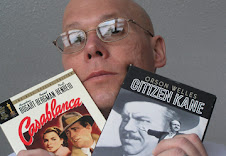
Film has twice as much Bette Davis
BETTE DAVIS with, well, Bette Davis in "Dead Ringer."
Bette Davis wasn’t what you would call a great beauty.
Sure she had her glamor roles, but what made her a star was she would take on any meaty role, even ones other actresses refused to take, because the roles didn’t fit their images.
And as Davis got older, she started to take the so-called ‘hag’ roles.
She did horror films like “Whatever Happened to Baby Jane?” and “Hush, Hush Sweet Charlotte.”
Lesser known but a typical mid-60s romp was “Dead Ringer.”
This film was double the fun, because Davis plays twin sisters, Margaret DeLorca and Edith Phillips.
Nearly two decades before, Edith dated a wealthy man, Frank DeLorca. They planned to marry.
But at the last minute, Margaret announces she was pregnant with Frank’s baby. So Margaret marries the rich dude and Edith moves away.
But Edith eventually returns to Los Angeles and a few years later, attends Frank’s funeral. After 18 years, she reunites with her rich sister.
For the technology of the 60s, the scenes with the two Bettes work pretty well. Edith looks older, more wrinkly, more warn. She also smokes, while Margaret says she quit because of what it does to the skin.
Edith runs a money-losing, cramped nightclub where she employs young talent, even though she can’t afford to.
Edith learns from the chauffeur on the way out of the massive grounds of her sister that the couple never had a child. Uh-oh! Now Edith really hates her sister!
And gosh, if the two are twins, why don’t their names rhythm.? Margaret and Edith?
Anyway, so Edith is going to lose the bar because she hasn’t paid the rent. She dates a cop, played by Karl Maldin, who is in love with her.
So she gets a nifty idea. Lure her rich sister to the apartment above her nightclub, shoot her and make it look like a suicide. To be sure, leave a suicide note.
Then make authorities think Edith is dead, then Edith takes over Margaret’s identity.
You would think that would be a stretch for her to get away with it. But this was a 60s suspense film and there’s no DNA. She gets away with it.
There are some delicious twists and turns in this treat of a movie.
Malden finds himself drawn to Margaret, who is really Edith. Peter Lawford plays the young lover of Margaret, who becomes suspicious of this new Margaret.
So how did rich husband really die?
This was a worthy vehicle for Davis, who stayed a star until her final film, “The Whales of August.” She is also the star of the TV film “The Dark Secret of Harvest Home,” filmed in Kingsville and Conneaut.
It is filmed in crisp black and white and has that early 1960s feel to it.
The story is difficult to buy, but it’s still worth the ride.
DEAD RINGER • Directed by Paul Henried • Written by Albert Beich and Rian James • Runtime: 115 minutes • Too violence for young children, lots of period smoking • 3 stars out of 4






